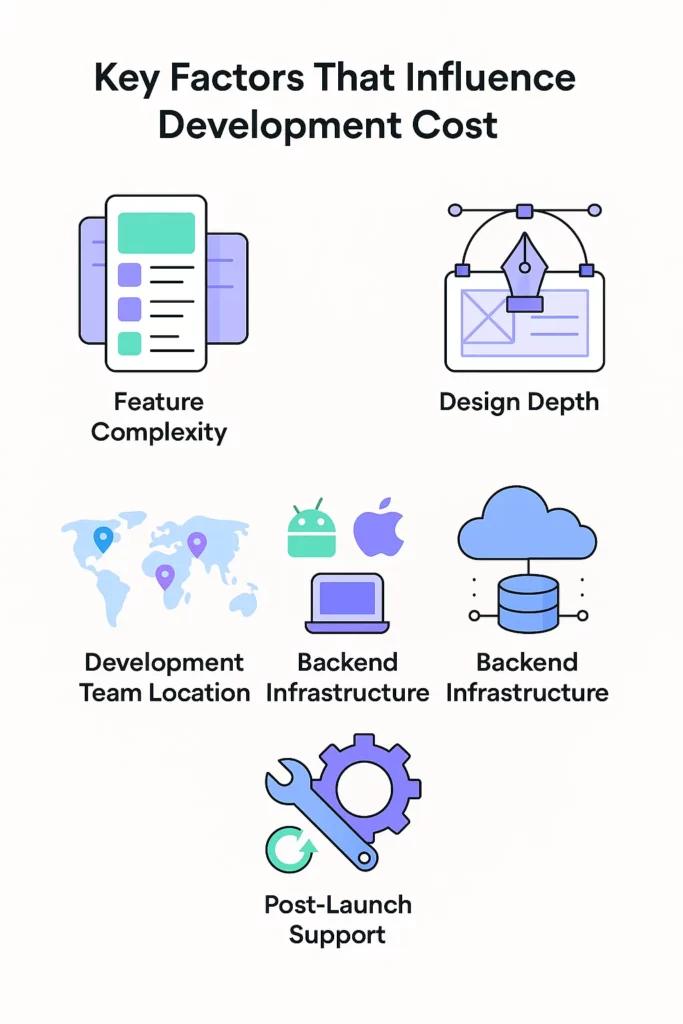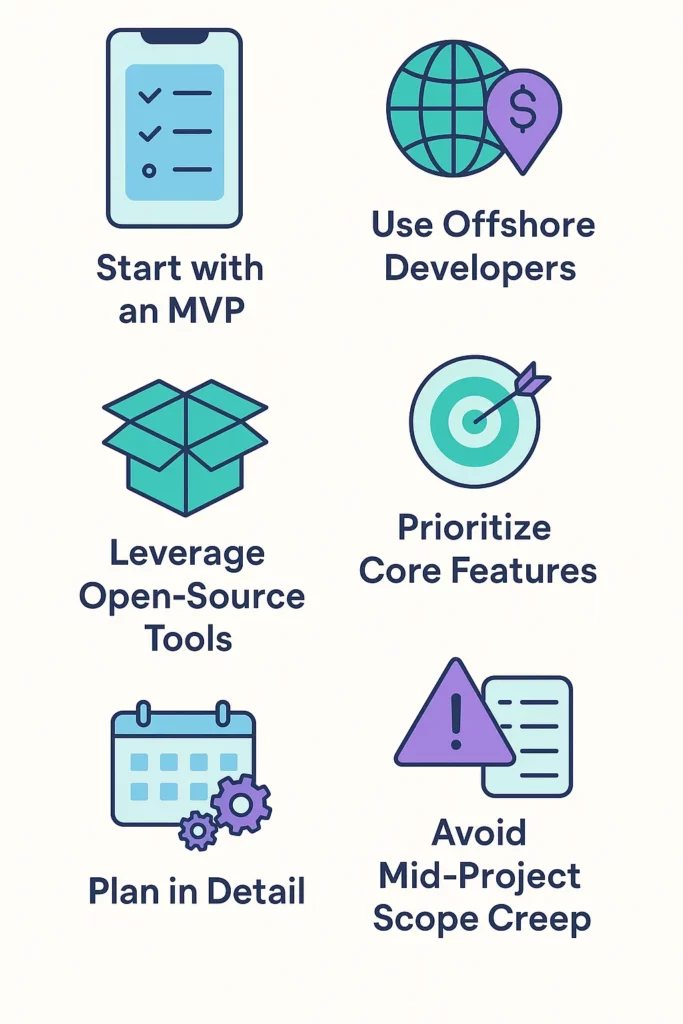How Much Does It Cost to Develop a Dunzo App?
Create a powerful, customizable streaming solution with Miracuves’ Dunzo Clone, equipped with high-performance features and next-gen technology.
If you’re planning to build a hyperlocal delivery app like Dunzo, one of the first questions on your mind is probably: “How much will it cost?”
And the answer? It depends — on your feature set, target cities, delivery verticals (groceries, medicines, food, courier), tech stack, and whether you’re building from scratch or customizing a white-label solution.
In this article, we’ll break down the key cost drivers, share estimated budget ranges for MVP vs. full-featured Dunzo clone apps, compare region-wise development costs, and offer pro tips on how to build affordably without compromising quality.
Let’s dive into what it really takes to build a Dunzo-like platform in 2025 — the smart way.

Key Factors That Influence Dunzo Clone App Development Cost
There’s no one-size-fits-all price for building a Dunzo clone. The total development cost hinges on several technical, strategic, and operational variables that shape both your initial outlay and long-term investment.
Here are the key factors that determine how much you’ll spend:
Feature Complexity
More features mean more time in design, development, and testing.
A basic MVP with order placing and live tracking is cheaper.
Advanced features like real-time fleet management, AI-based delivery estimates, in-app chat, and dynamic pricing significantly increase complexity (and cost).
Number of Platforms
Are you launching on Android first? iOS too? What about a web admin dashboard or vendor panel?
Building for multiple platforms multiplies your frontend development hours.
UI/UX Design Quality
A custom, branded interface optimized for delivery workflows adds value — but also cost.
Pre-made UI kits are cheaper.
Rich animations, gesture-based navigation, and interactive maps cost more.
Development Team Location
Rates vary dramatically based on geography:
India & Southeast Asia: $20–$50/hr
Eastern Europe: $40–$80/hr
Western Europe: $80–$150/hr
North America: $100–$200/hr
Choosing an offshore team can deliver the same functionality at a fraction of the cost.
Backend Infrastructure
Your backend needs to support:
Real-time tracking
Order routing
Payment integration
These backend services require cloud hosting, database management, and robust security — all of which add to the budget.
Post-Launch Support
Even after launch, your app will need:
Regular updates
Performance monitoring
Many startups underestimate post-launch spend — make sure it’s in your plan.
Dunzo Clone App Cost Estimates by Type
To help you plan your budget more effectively, here’s a breakdown of the typical cost ranges for building a Dunzo clone based on app scope and feature depth.
|
App Type
|
Estimated Cost Range (USD)
|
Description
|
|---|---|---|
|
MVP (Minimum Viable Product)
|
$15,000 – $30,000
|
Basic delivery features: user registration, search, cart, order placement, delivery tracking
|
|
Standard Version
|
$30,000 – $70,000
|
Includes vendor panel, driver app, advanced filters, analytics, push notifications
|
|
Full-Featured App
|
$70,000 – $150,000+
|
Multi-vertical delivery, real-time fleet tracking, AI-based ETA, in-app chat, loyalty programs, scalable admin dashboard
|
Region-Wise Development Cost Comparison : Dunzo Clone
Your choice of development partner — and their geographic location — has a major impact on your overall budget. While the quality of output doesn’t always correlate with cost, the difference in hourly rates is significant.
Here’s how regional pricing typically compares:
|
Region
|
Hourly Rate (USD)
|
Typical Cost for Standard App
|
|---|---|---|
|
North America
|
$100 – $200/hr
|
$100,000 – $200,000+
|
|
Western Europe
|
$80 – $150/hr
|
$80,000 – $160,000+
|
|
Eastern Europe
|
$40 – $80/hr
|
$40,000 – $90,000+
|
|
India & Southeast Asia
|
$20 – $50/hr
|
$20,000 – $60,000+
|
Why Many Startups Go Offshore
Many founders choose to partner with experienced teams in India or Southeast Asia to:
Get more development hours per dollar
Access a broad talent pool familiar with on-demand delivery models
Scale affordably across app versions and updates
Cost Breakdown by Development Stage : Dunzo Clone
Understanding how your budget is distributed across different development phases helps you plan more strategically — and prevent last-minute surprises.
Here’s how costs typically break down when building a Dunzo clone app:
|
Development Stage
|
Estimated % of Total Cost
|
Includes
|
|---|---|---|
|
Discovery & Planning
|
5–10%
|
Market research, competitor analysis, defining user personas, feature scoping, technical requirements.
|
|
UI/UX Design
|
10–15%
|
Wireframing, prototyping, responsive design, visual branding, user experience mapping.
|
|
Frontend & Backend Dev
|
40–50%
|
Core feature development, database architecture, APIs, payment integrations, dashboard and logic build.
|
|
Testing & QA
|
10–15%
|
Manual and automated testing, bug fixing, device/browser compatibility checks, performance tuning.
|
|
Deployment & Launch
|
5–10%
|
App store submission (Android/iOS), server setup, production deployment, performance monitoring tools.
|
|
Maintenance & Updates
|
10–20%
|
Post-launch bug fixes, new features, server maintenance, user support, compliance updates.
|

Tips to Reduce Development Costs Without Compromising Quality
Building a robust Dunzo-like app doesn’t mean you need a sky-high budget. With smart planning and the right approach, you can control costs while still launching a high-performing, scalable platform.
Here are proven strategies to keep your development budget lean and efficient:
Start with an MVP
Begin with just the core features:
User registration
Product listings
Order placement
Delivery tracking
This gets you to market faster and allows for data-driven iteration based on real user feedback.
Choose Offshore Development
Working with skilled teams in India or Southeast Asia lets you:
Access experienced on-demand app developers
Save up to 60–70% in costs
Maintain speed and quality with the right partner
Leverage Open-Source & Reusable Components
Use proven tools and libraries for:
Authentication
Real-time location tracking
Notifications
Payment gateways
This cuts both development time and cost.
Prioritize Features That Drive Engagement
Avoid feature overload in version 1. Instead:
Focus on tools that improve order success, user retention, and delivery speed
Add complex features (e.g., loyalty rewards, live chat) post-launch
Plan Thoroughly Before Development
A clear project scope, wireframes, and feature list prevent mid-project pivots — which are one of the biggest cost drivers.
Choose the Right Development Partner
Even with a lean strategy, the success of your Dunzo clone app hinges on the expertise and reliability of your development team. The wrong partner can lead to costly delays, feature gaps, or a poor user experience.
Here’s what to look for when choosing a development company:
Proven Experience in On-Demand Delivery Apps
Your partner should have a track record building logistics or hyperlocal apps — not just generic mobile apps.
Check for:
Portfolio of delivery, courier, or marketplace apps
Experience with features like real-time tracking, route optimization, and fleet management
End-to-End Services
Look for a team that can handle:
Idea validation & MVP planning
UI/UX & scalable architecture
Backend development & API integration
Post-launch maintenance and growth support
This ensures technical continuity from start to scale.
Strong Technical Stack & Security Practices
Your partner should use:
Reliable frameworks (Flutter, React Native, Node.js, etc.)
Secure authentication and payment systems
Scalable cloud services (AWS, GCP, Azure)
Transparent Communication & Project Management
Agile workflows, milestone tracking, and regular updates are essential for hitting deadlines and budgets.
Conclusion
Understanding the Dunzo clone app development cost is the first step to launching smart and scaling with confidence. Whether you’re starting lean with an MVP or going full throttle with a multi-service super app, your budget will depend on:
The features you prioritize
The platforms you build for
The team you hire
And the scope of your post-launch roadmap
With the right mix of strategic planning, offshore development, and scalable technology, you can launch a reliable, feature-rich delivery app without overspending.
At Miracuves, we don’t just clone — we co-create. Our team works with you from idea to launch to help you minimize cost, reduce risk, and maximize your go-to-market success.
Frequently Asked Questions
The cost to build a Dunzo clone app ranges from $15,000 to $150,000+, depending on the features, platforms, design complexity, and development team location. An MVP with basic delivery features can be built for $15k–$30k, while a fully-loaded multi-service version can exceed $100k.
A Minimum Viable Product (MVP) should include:
User registration & login
Product or store listings
Cart and order placement
Real-time delivery tracking
Notifications
Payment gateway integration
Delivery agent app
Yes, white-label Dunzo clone scripts can cut development time and costs by 50–70%. These solutions are pre-built and customizable, making them ideal for startups that want faster time-to-market without building from scratch.
MVP version: 4–6 weeks
Standard version: 8–12 weeks
Full-featured super app: 16–24 weeks
Timeframes depend on your chosen features, number of platforms, and revisions during development.
Common tech stacks include:
Frontend: Flutter, React Native (for cross-platform), Swift (iOS), Kotlin (Android)
Backend: Node.js, Laravel, or Django
Database: MongoDB, PostgreSQL
Cloud: AWS, Google Cloud, or DigitalOcean
Real-time: Firebase, Socket.IO



